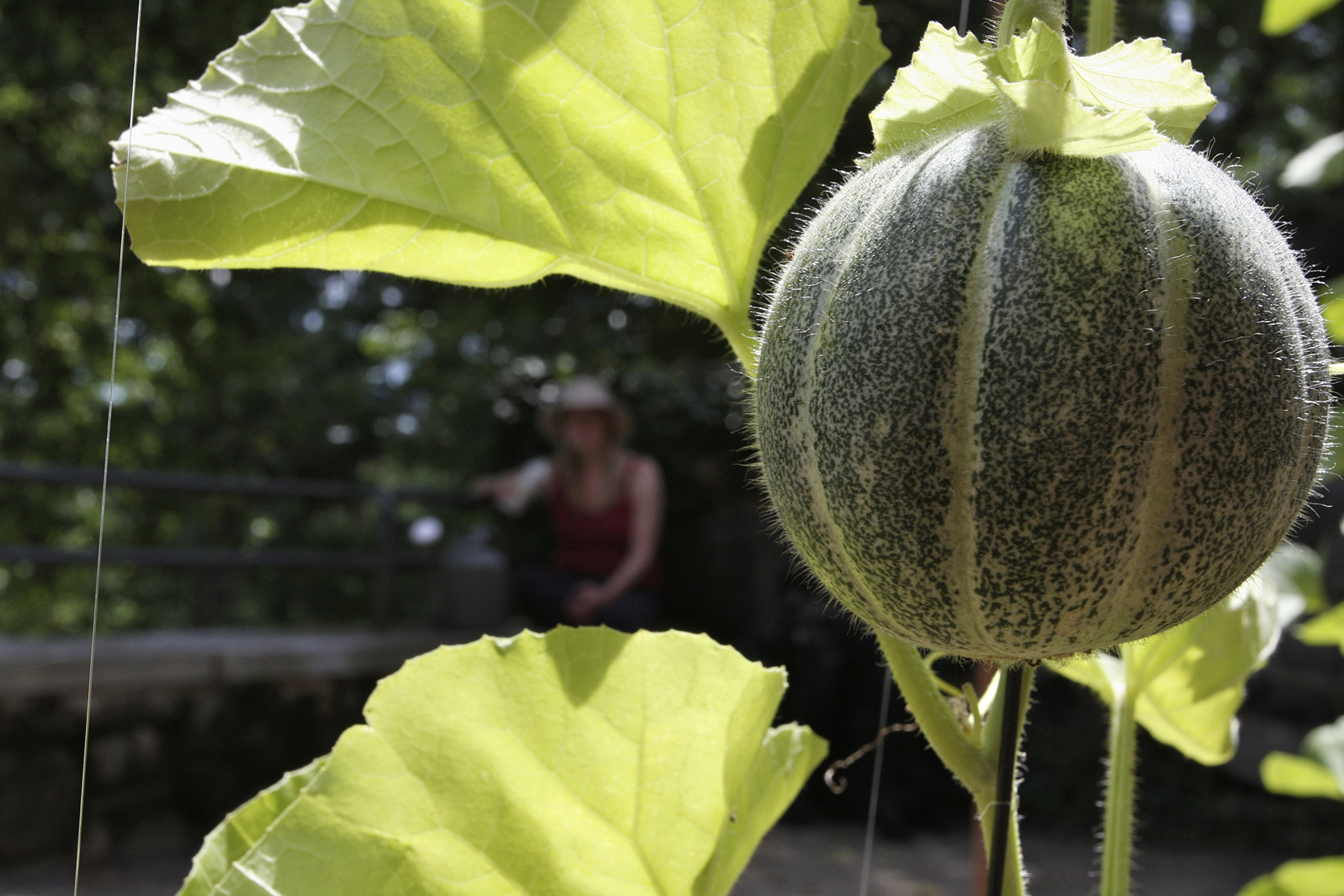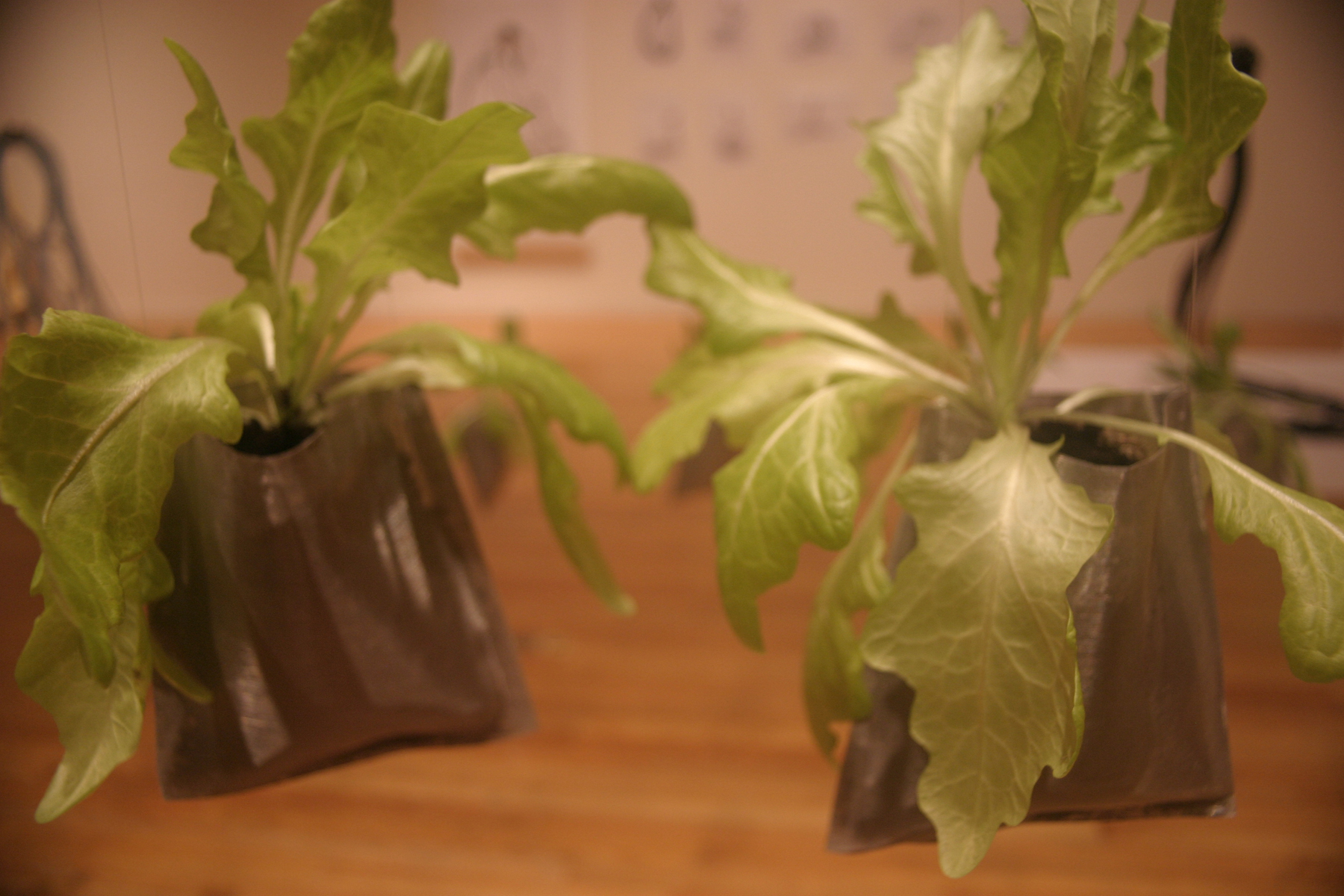Artist Statement
Wendell Berry returned to the farm. While it is not practical, nor even possible for the multitudes of us to follow in his footsteps, the agrarian values he champions—sustainable agriculture, wise management of resources, frugality, pleasures of good food, meaningful work, local economy and connection to place—profoundly make sense, as humanity more deeply suffers the consequences of overpopulation, detachment from the land, global consumer based economies, dependence on industry, and now technology. My generative sculptures, including heirloom food plants, are an artistic, practical, and philosophical exploration into how growing, cooking and eating beautiful food together, from within a community might change us. I have a lot to learn. And I can only dream right now, of possibilities, as the journey will not be mine alone. Yet however this unfolds, here in the beginning, and wherever it leads, this work is an act of hope.
Essay
Agriculture, a noble and necessary occupation, is also literally a dirty business and increasingly removed from post-industrial urban and suburban life. Leah Gauthier, by placing agriculture in a specifically cultural context—the museum —asks us to re-imagine the growing, harvesting, preparation and consumption of food so that we may re-connect with some of humanity’s most fundamental activities.
The museum in many ways is a scared space, a holy shrine of art in which people act differently, look at things with a fresh perspective, and often seek personal transformation. When these behaviors and attitudes, usually reserved for Art are brought to bear on Food, our relationships to what nourishes us can change. The beauty of plants and fruits is more manifest, mundane picking and cooking become performed and observed rituals, and eating can be a sacrament. A simple shift in physical context allows us to experience, if even fleetingly, a much older, and perhaps wiser, connection to nature and our physical being.—Nick Capasso, Curator, Decordova Museum and Sculpture Park
Reviews
Director Weiner Herzog often comments both in interviews and his works on how Modern living conditions, including capitalism, impoverish lived experience. In response to similar impulses, Leah works with rare and endangered agricultural plant species because she is interested in the way that local varieties, once plentiful have been usurped in favor of plants that better serve the needs of the agricultural industrial complex and international food distribution systems. It is a goal with her work to emphasize the loss that has been incurred as a result of these practices. The richness of flavor, color and texture and other beneficial traits of these ‘lost varietals’ become Leah’s palette for her work, which often takes the form of happenings in which the viewer is invited to literally eat the work…
By inviting the viewer to have a very rare culinary experience based in the richness of biodiversity, once commonplace experience and now endangered by industrial practices, she is directly speaking to the impoverishing influence of modernization and also champions a turn to more interesting and generous. -Patte Loper, Artist and Professor of Painting, School of the Museum of Fine Art Boston
The experience of observing visitors interact with her installation was a memorable one. Lettuce succeeds as an aesthetic object that provokes a series of questions surrounding contemporary and historical ecology, the sense of taste, and our role as consumers in the fullest sense. The installation evoked an elegant, simple field in the sky, and Leah’s choice of materials brilliantly harmonized with the organic substances. The novel performative and collaborative aspects of her work introduced ideas of authorship and reception that can be further developed in subsequent projects.–Meghan Hughes, Professor of Visual and Critical Studies, Tufts University
Leah’s interest in social activism, specifically, her interests in the environment, and ecology, have been harnessed in her thesis project and ongoing body of work. As she has developed her work, its form has become more ambitious in scale, engaging larger spaces and a range of community based organizations. Recognizing the role of the individual artist as an activist in the public realm, she has broadened her scope beyond the art word itself.
Her thesis project, Lettuce, furthers her investigations of environmental responsibility, life cycles, and social rituals Her formal concerns have sharpened, with direct references to Land Art of the 1970s, Minimalism, and architecture. With Lettuce, she has pushed herself further into an interdisciplinary realm, incorporating a performative aspect into the opening event. Her choice to shift the content of the exhibit after the opening reception, with only web-based documetnation of the project existing, further realizes her vision of pushing viewers to take personal action, while illusrtating the fragility of the work’s medium, nature itself. ..At a time when we need imaginative ways to capture the interesteand attention of the public to make change to protect natural resources and the environment, Leah’s work is all the more relevant. She is pushing visual language, social messaging and art history with her work>David Cabrera, Arist and Professor of Contemporary Art, School of the Museum of Fine Art Boston


